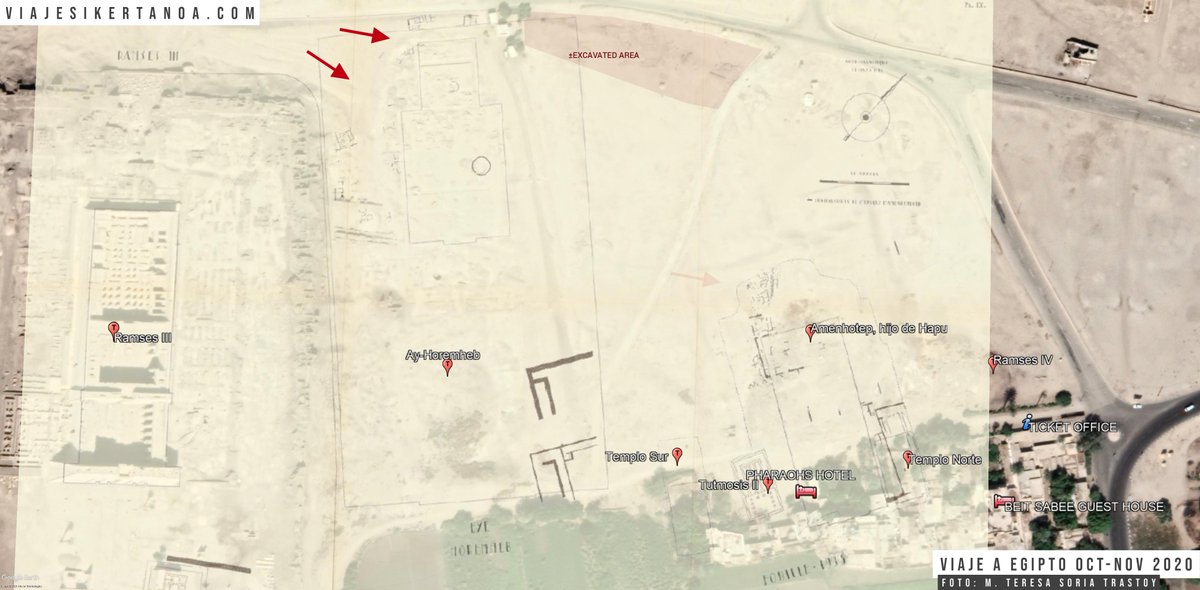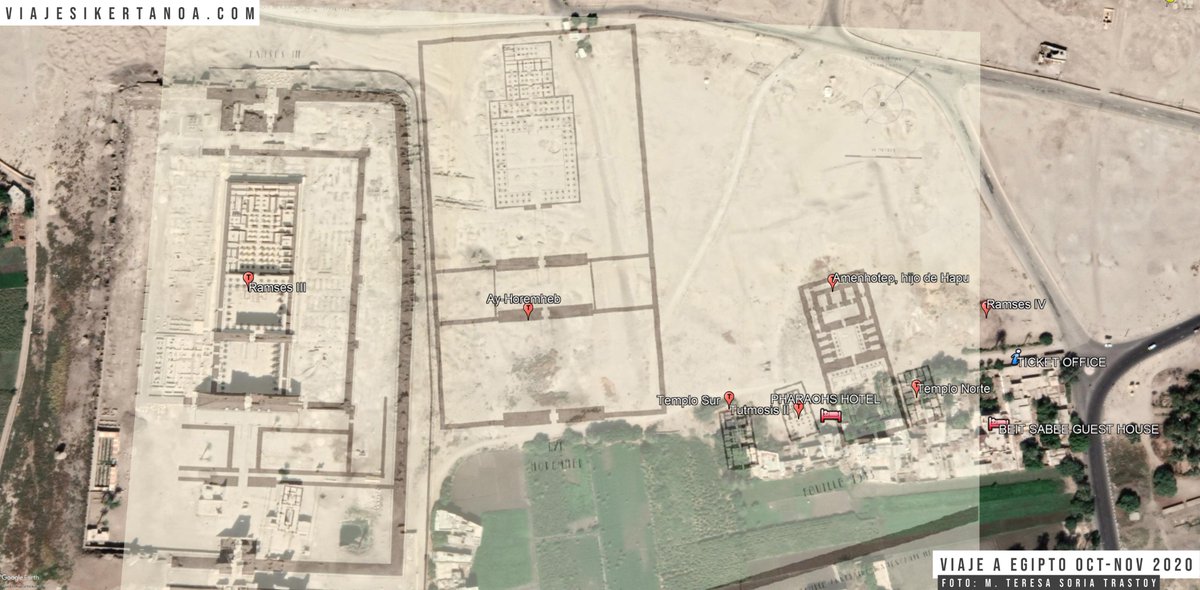
Thread: This is the area where the Temple of Amenhotep, Son of Hapu, and 4 more lay. In Oct 2020 we saw archaeological work done in the area. I was interested in the outer rear of the temple, so we immediately went there #egyptology #archaeology #ancientEgypt #Luxor #excavations 

The most interesting feature about this whole area, including the Temple of Ay and Horemheb, are the domestic structures from the time of Amenhotep III discovered by Robichon&Varille (ASHapu)+Hölscher (Ay-H.), cited after by Lacovara #Egyptology #Archaeology #Luxor #Egypt 





We can see that structures in situ with my #GoogleEarth composition and the excavated area in the map along with my shot in October 2020 #Egyptology #Archaeology #Luxor #Egypt #ancientegypt 



The domestic structures are so interesting because they seem to be associated with Malqata, the typology of some of them could be a precursor of those of Amarna and the sinusoidal enclosures walls and curve walls of the exterior of some houses #Egyptology #Archaeology #Egypt 



In short, the structures now excavated should be related to those of the ASH and A&H Temples. To better understand the context I leave you some of my compositions in Google Earth, old photos and the last tweet with bibliography #Egyptology #Archaeology #Egypt #ancientEgypt #Luxor 





Old photos from the publication of Robichon and Varille archaeological work in the Temple of Amnehotep, Son of Hapu #Egyptology #Archaeology #Egypt #ancientEgypt #Luxor 



Robichon, C. y Varille, A. (1935): “Nouvelles fouilles de temples funéraires thébains”, RdE 2, pp. 177-181
Robichon, C. y Varille, A. (1936): Le temple du scribe royal Amenhotep fils de Hapou, FIFAO 11, El Cairo.
Robichon, C. y Varille, A. (1936): Le temple du scribe royal Amenhotep fils de Hapou, FIFAO 11, El Cairo.
Hölscher, U. (1934): The Excavation of Medinet Habu, Vol 1: General Plans and Views, OIP, 21, El Cairo.
Lacovara, P. (1996): The New Kingdom Royal City, London/New York. (End Thread)
Lacovara, P. (1996): The New Kingdom Royal City, London/New York. (End Thread)
• • •
Missing some Tweet in this thread? You can try to
force a refresh


